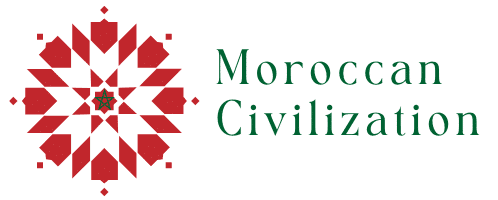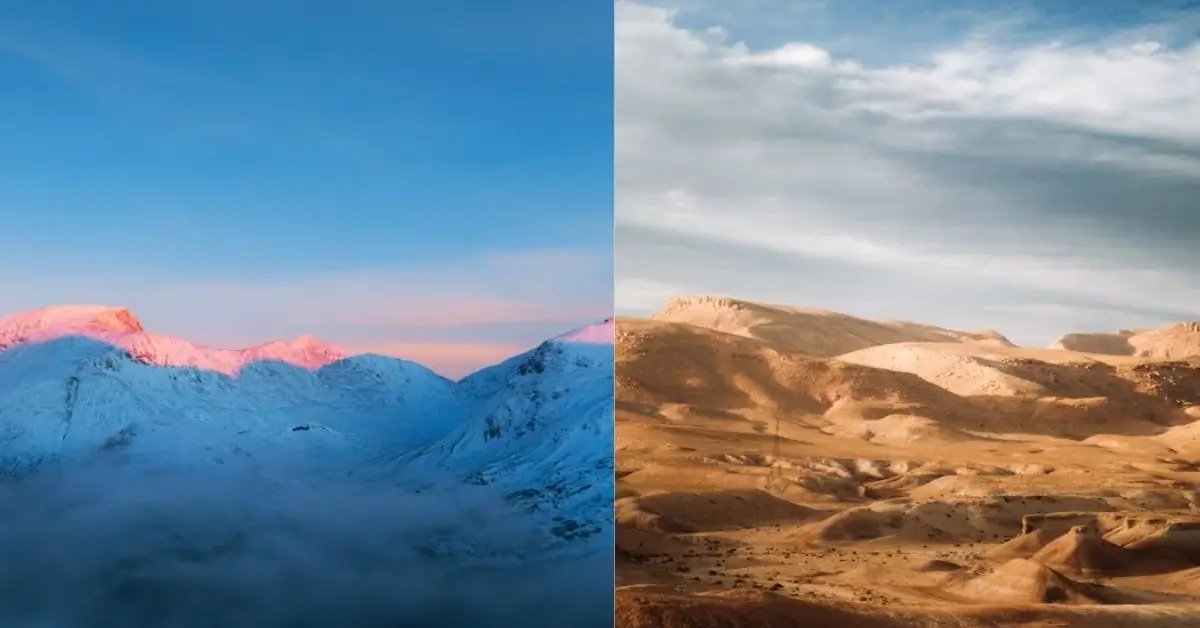Where is Morocco? Discover Its Place on the Map and History
I was born in Casablanca — where the Atlantic breathes against the shore and the streets are alive with movement, day and night. As a kid, I used to sit by the water and watch the ships disappear into the horizon. I’d wonder where they were headed — Europe maybe, or deep into the Atlantic. But something always stayed with me: those ships weren’t just leaving Morocco. Some people out there were trying to find it. They weren’t looking for a beach or a city — they were looking for something real. Something honest. Something rooted.
Table of Contents
So… where is Morocco? You can find it on the map, sure. But for me, it starts somewhere else — somewhere quieter. It starts in the sound of the adhan rising over Taounate’s hills at sunrise. It’s in my grandmother’s kitchen, where the smell of olive oil and herbs wrapped itself around our childhood. It’s in the feet that walk the old alleys of Fez or Marrakech, where every step carries a thousand years.
It’s a country of opposites that somehow make sense together — the noise of Casablanca’s trams, the stillness of the Rif mountains. Morocco has always been between worlds. Part African, part Arab, part Mediterranean. And yet, it’s something entirely its own.
I started Moroccan Civilization because I wanted to show people that Morocco is more than a destination. It’s a way of being. A way of welcoming. A way of holding onto tradition without closing the door to the world. You’ll see it in the old men sipping tea in Meknes, in the surfers at Taghazout, in the artisans of Fez who still carve by hand.
You’ll find Morocco in the maps — yes. It sits just below Spain, where Africa begins and Europe blinks across the sea. But if you really want to know where Morocco is… you have to come feel it. It’s in our stories. It’s in our food. It’s in how we care for guests, how we raise our children, how we keep the baraka — the blessing — alive in our everyday lives.
So come. Let me show you where Morocco truly is. Not just on paper — but in the soul.
Where Is Morocco Situated in Africa?
North Africa’s Strategic Crossroads
Morocco is in Africa — no doubt about that — but it’s in a very particular spot. We’re right up there in the northwest corner, just across the water from Spain. Only 13 kilometers of sea separate us. That’s less than an hour’s drive between two cities. But it’s enough to feel the difference between continents, between languages, between worlds.
When someone asks me, “Where is Morocco situated in Africa?”, I don’t just think of maps. I think of how people have always passed through here. Long before we had countries or borders, traders and travelers were coming and going. Salt from the Sahara. Gold from the south. Silk from the north. Ships used to pull into Tangier loaded with goods — and sometimes with trouble.
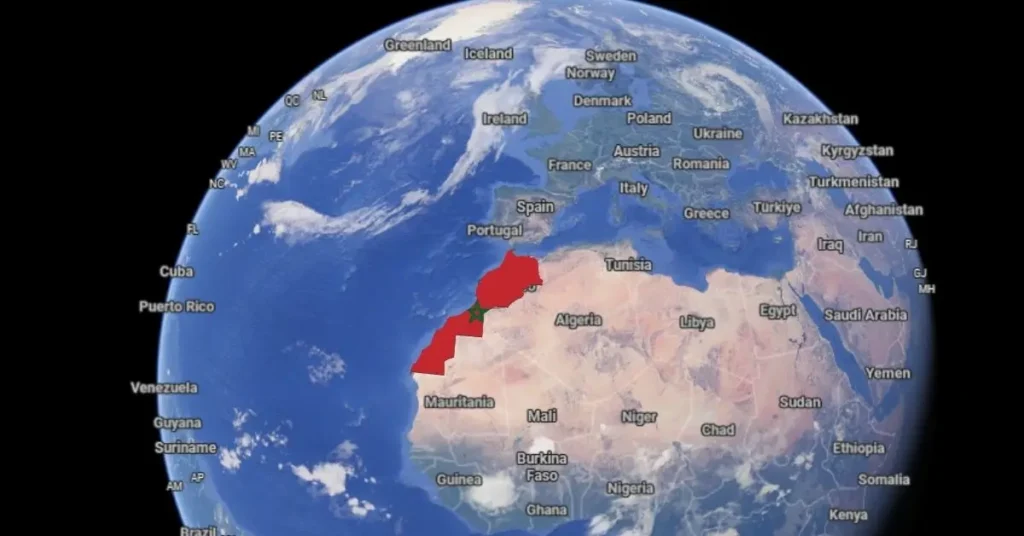
But what makes Morocco different is that we didn’t just absorb what came our way. We transformed it. We stayed rooted in who we were. That’s why when you walk through a medina today, you’ll hear four languages before you finish your tea: Amazigh, Arabic, French, and maybe a little Spanish. That’s not confusion. That’s identity. That’s who we are.
Even our food tells this story. Go south and you’ll taste couscous with dried figs. Go north and it comes with seven vegetables, maybe lamb. The spices change, but the soul stays the same.
If you’ve ever walked the blue streets of Chefchaouen or felt the silence of the desert near Merzouga, you know what I mean. You can feel how layered this place is. Morocco has always been a country in motion, but never a country that forgot where it came from.
From the Sahara to the Sea
Look at a map and you’ll see it clearly: Morocco stretches from the cool Mediterranean up north all the way down to the edge of the Sahara. That’s a serious range. One day you’re breathing in salty air near Tangier, and the next, you’re watching the dunes shift in the southern wind.
The coastline of Morocco is massive — over 1,800 kilometers long. That’s more than many countries even have total land. And along it, life flourishes. Surf towns like Taghazout, fishing villages that still use wooden boats, families picnicking on windy beaches in El Jadida.
Then, go inland — the landscape shifts fast. You start to see argan trees, rough and twisted from the dry wind. Palmeraies spread out like green fingers across the red earth. Keep going south, and the heat starts to press down. You’re entering the Sahara.
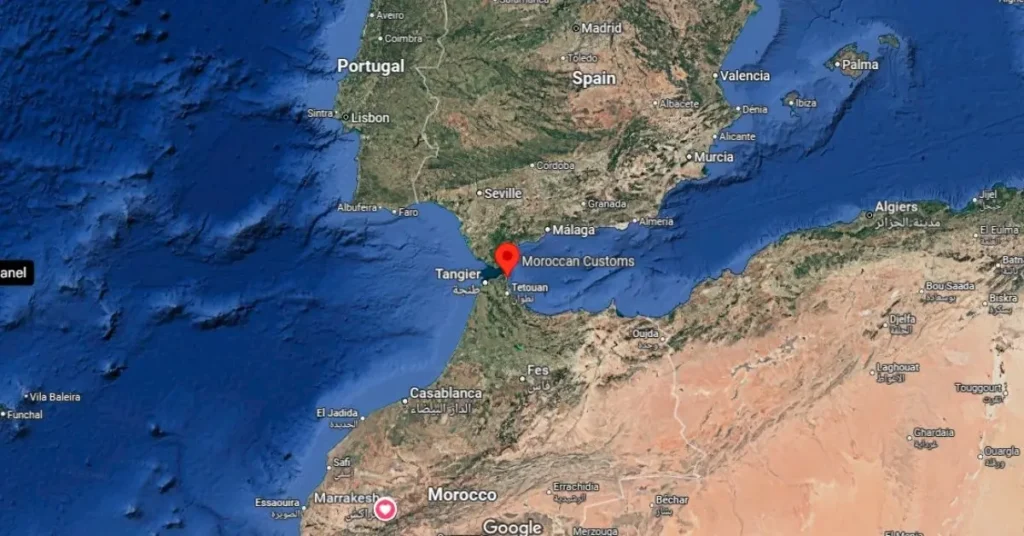
But don’t let anyone tell you the desert is just sand. It’s not. It’s silence, yes — but the kind that speaks. People live here. Always have. They guide by stars. They read the wind. If you’ve slept outside near Merzouga with nothing but firelight and the Milky Way above you, you know exactly what I mean. That silence is a kind of prayer.
That’s what makes Morocco so special. You can have breakfast on the beach, hike snow-capped mountains by lunch, and fall asleep under the stars in the desert — all in the same day. It’s not just a land of contrasts. It’s a land that holds them all in harmony.
Geography, Climate & Natural Wonders
Mountains, Beaches, and Everything In Between
Morocco’s geography is like a mosaic — a little bit of everything, stitched together into something whole. If you head north, you’ll find lush green hills and quiet beaches along the Mediterranean. If you go south, the land dries out and stretches into the dunes of the Sahara. And in between? Mountains that touch the sky and valleys full of olive trees.
I’ve always loved that about this country. You don’t need to go far to see something completely different. One morning you can be walking in the cedar forests near Ifrane, where monkeys play and snow sometimes falls. That same night, you can be watching the stars rise above the sand in Zagora. It’s all here — snow, sand, sea, and stone — and each region carries its own flavor, its own mood.
The Atlas Mountains cut right through the heart of Morocco. They’ve shaped everything: our weather, our water, our way of life. Villages hang on to the hillsides like they’ve always been there, because many have. People still walk donkey paths between stone houses. The rhythm is slower in these places, more grounded.
And then you have the coastline — long, wild, full of energy. Cities like Agadir, Essaouira, and Casablanca pulse with life. But there are also quiet corners, little coves and fishing towns where time feels like it’s paused. If you’re into movement, if you’re searching for real Morocco adventure, this land will keep surprising you.
A Climate That Changes With the Land
Because of the geography, Morocco’s climate doesn’t play by one rule. Up north near Tetouan, it rains more — everything is green, soft, calm. In the center, around places like Meknes or Fez, the seasons are sharper. Summers are hot, winters are crisp. Go east, and things dry out. Down south, it’s desert — the kind that burns during the day and cools right down at night.
You can stand in Marrakech in July and feel like the sun’s sitting right on your shoulders — then drive two hours into the High Atlas and need a jacket. I remember hiking near Toubkal once in early spring. There was snow on the ground, but when we came back down toward Asni, the almond trees were already in bloom. That’s Morocco — always shifting, always full of contrast.
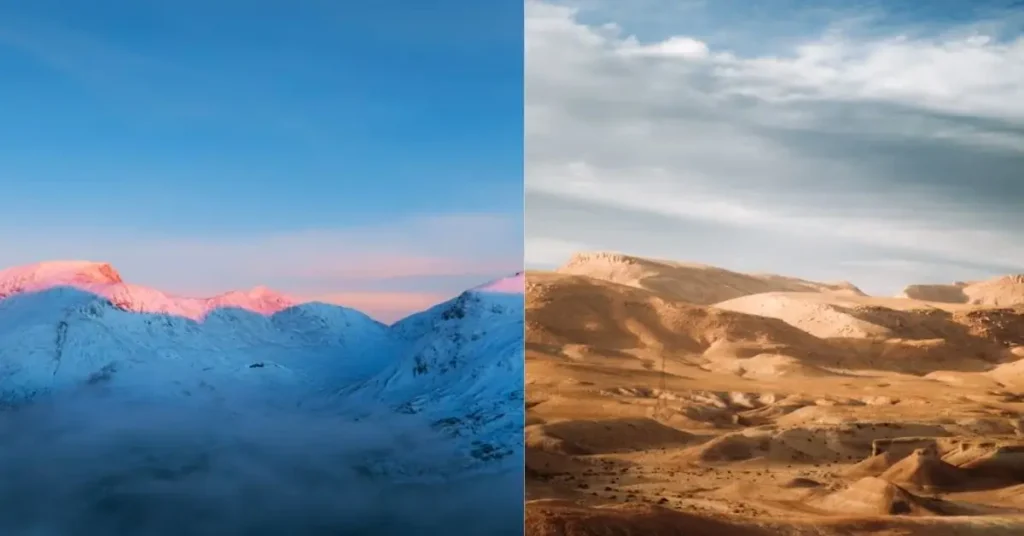
But it’s not just weather — it’s how we live with it. We build thick-walled homes in the desert to keep out heat. We nap in the afternoons when the sun is too strong. We plant gardens where water runs and build terraces where it doesn’t. The climate doesn’t just shape our land. It shapes our habits, our architecture, our daily rhythms.
And maybe that’s the beauty of it. Morocco teaches you to live with change. To adapt. To pay attention to the land — because the land always knows what time it is.
Cultural Geography — The People & Traditions of Morocco
Arab, Amazigh, African — Who We Really Are
People love to ask, “Are Moroccans Arab or African?” And I always smile. Because the truth is — we’re both. And more.
Morocco is home to Amazigh (Berber) people, who’ve lived here for thousands of years — long before the Romans, long before Islam. Their language, their music, their way of life still beats strong in the mountains and valleys. I hear it in the way elders speak in Taounate, in the rhythms of ahidous, in silver jewelry handed down through generations. That’s a Morocco the world rarely sees — but it’s deep, it’s steady.
Then came Arab influence — not just language, but faith, art, poetry, and trade. And then Europe. And Africa. And the Sahara. All of it mixed, layer by layer. We’ve never been just one thing. We’re Amazigh. We’re Arab. We’re African. We’re Mediterranean. We’re Moroccan. And none of those things cancel the others out.
That’s why when you walk through Fez’s old city, you might hear three or four languages in one shop. That’s why Moroccan Arabic — Darija — sounds different from anything else in the Arab world. We don’t separate who we are. We build with it.
And we live with difference, side by side. A mosque next to a synagogue. An Amazigh grandmother who teaches her grandchild Arabic. A Tangier café where Spanish, French, and Moroccan laughter mix in the air. That’s everyday life. That’s normal. That’s us.
Traditions That Still Hold Us
For all the change around us, some things don’t budge — and honestly, I’m grateful for that. We still drink tea like it’s sacred (because it kind of is). We still welcome strangers like guests of honor. We still gather around food — not for calories, but for connection.
In the countryside, I’ve seen women wake up before the sun to knead bread by hand, not just for their own families, but for neighbors too. In cities, I’ve watched old men greet each other with hands to their hearts and long, careful blessings. And during Ramadan or Eid, Morocco doesn’t just celebrate — it comes alive. Lights in the souks, drums in the streets, kids playing under moonlight while the smell of harira floats through the air.
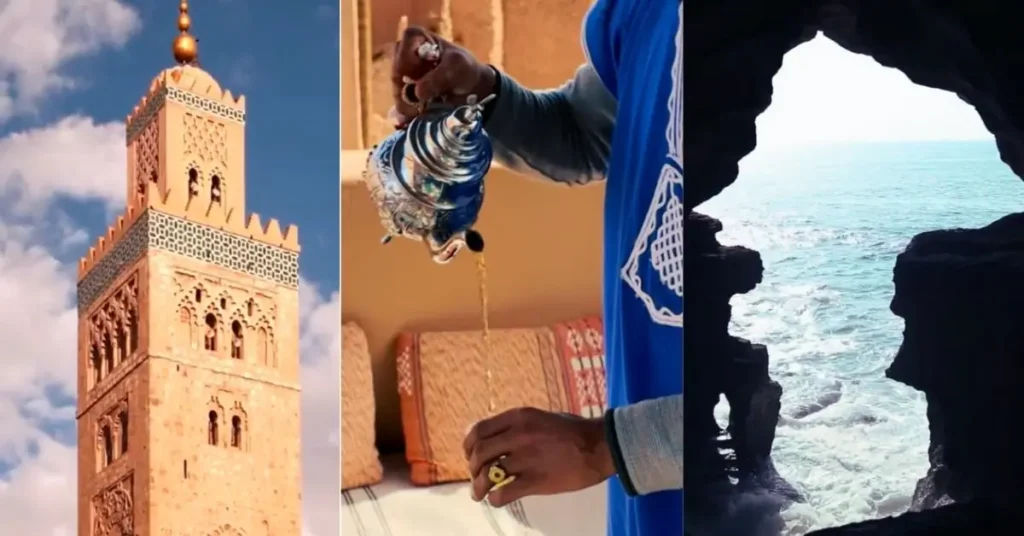
Every region adds its own color. Up north, near Tetouan, you’ll find Andalusian elegance in the music and food. Down south, near Zagora, the Sahara teaches patience and hospitality. In Essaouira, wind and art dance together. In Marrakech, old and new blend like spices in a tagine.
And through it all — tradition holds. We still believe in baraka — that quiet blessing that comes when you live with respect, with care, with love for what came before you.
So yes, Morocco is a mix. But it’s a mix that knows itself. We don’t just carry tradition — we wear it, we cook it, we sing it. It’s in our tea, our tiles, our tenderness.
Morocco’s Global Importance — Then and Now
A Crossroads of History
Morocco has always stood at the crossroads — not by accident, but by nature. This land saw the rise and fall of empires long before the world started drawing borders. It’s not just where Africa touches Europe — it’s where camel caravans met sea traders, where Islam blended with Amazigh traditions, and where ancient roads led all the way from Timbuktu to Tangier.
You see it everywhere. In the ruins of Volubilis, where the Romans built arches under African skies. In the red walls of Marrakech, where dynasties rose with poetry, science, and power. In Fez, where the oldest university in the world still echoes with learning.
And then came the colonizers — the French, the Spanish. They built roads and railways, yes. But they also brought struggle. Our people resisted — not with noise, but with courage. In mountains. In souks. In quiet villages. We kept the baraka alive.
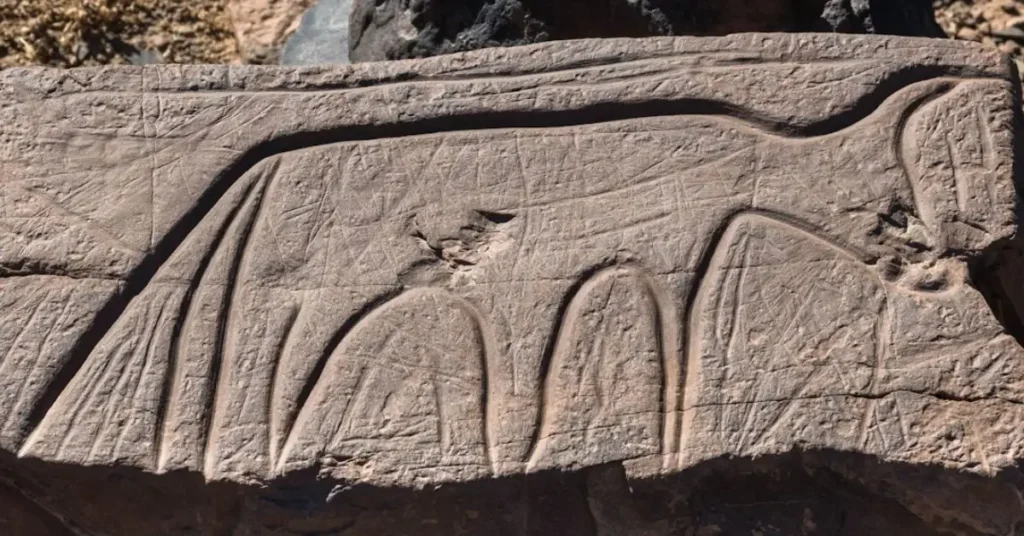
Morocco gained independence in 1956, but it never stopped changing. Today, we stand tall with one foot in tradition and the other in the future. We host international summits, we export solar energy, we build bullet trains. But we still pause to sip tea slowly, to break bread together, to greet each other with blessings.
We are no longer just a stop along the way. We are the destination.
A Bridge Between Continents
In 2025, Morocco is more than just a country on a map — it’s a connector. A cultural, spiritual, and logistical bridge. We’re part of the African Union, but we also speak fluently with Europe, the Middle East, and beyond. Our people live all over the world — in Paris, in New York, in the Gulf — but carry Morocco in their hearts like a second heartbeat.
You feel this role in places like Casablanca, with its ocean skyline and modern energy. In Rabat, where diplomacy meets dignity. In the Sahara, where Morocco holds ground not just politically, but culturally — preserving heritage while pushing forward.
Tourism, trade, migration, climate talks — Morocco plays a part in all of it. And not by pretending to be someone else. By being exactly who we are.
We are storytellers. Builders. Listeners. Hosts. We are children of Amazigh roots and Arab prayers. We carry the past like a lantern — not a weight. And we move forward with it lit.
So when someone asks again, “Where is Morocco?” — maybe now the answer feels different. Maybe it’s not just latitude and longitude. Maybe it’s a feeling. A rhythm. A place that teaches you how to slow down, look around, and listen to the land.
Final Thought
So, where is Morocco?
It’s in North Africa, yes. That’s the easy answer. Between Algeria and the Atlantic, just a short sea away from Spain. But that’s just geography. The real answer is something deeper. Morocco is where the desert meets the ocean. Where ancient stories are still told by hands — in clay, in fabric, in tea. It’s where every region carries a different rhythm, and yet, we all move together.
You’ll find Morocco on a map, but you’ll feel it in the call to prayer at dusk, the mint in your glass, the warmth of a stranger saying “bslama” like they’ve known you forever.
To me, Morocco is memory. It’s movement. It’s home.
And I believe the more people understand where Morocco really is — not just the place, but the spirit — the more they’ll see why it matters.
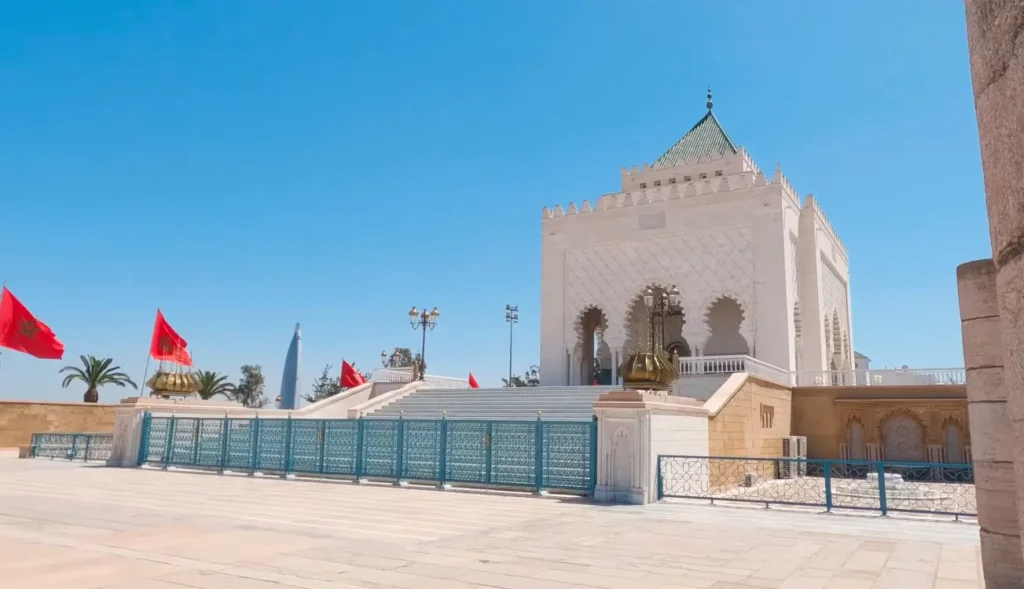
And maybe, just maybe, they’ll feel like they’ve found a small part of themselves here too.
